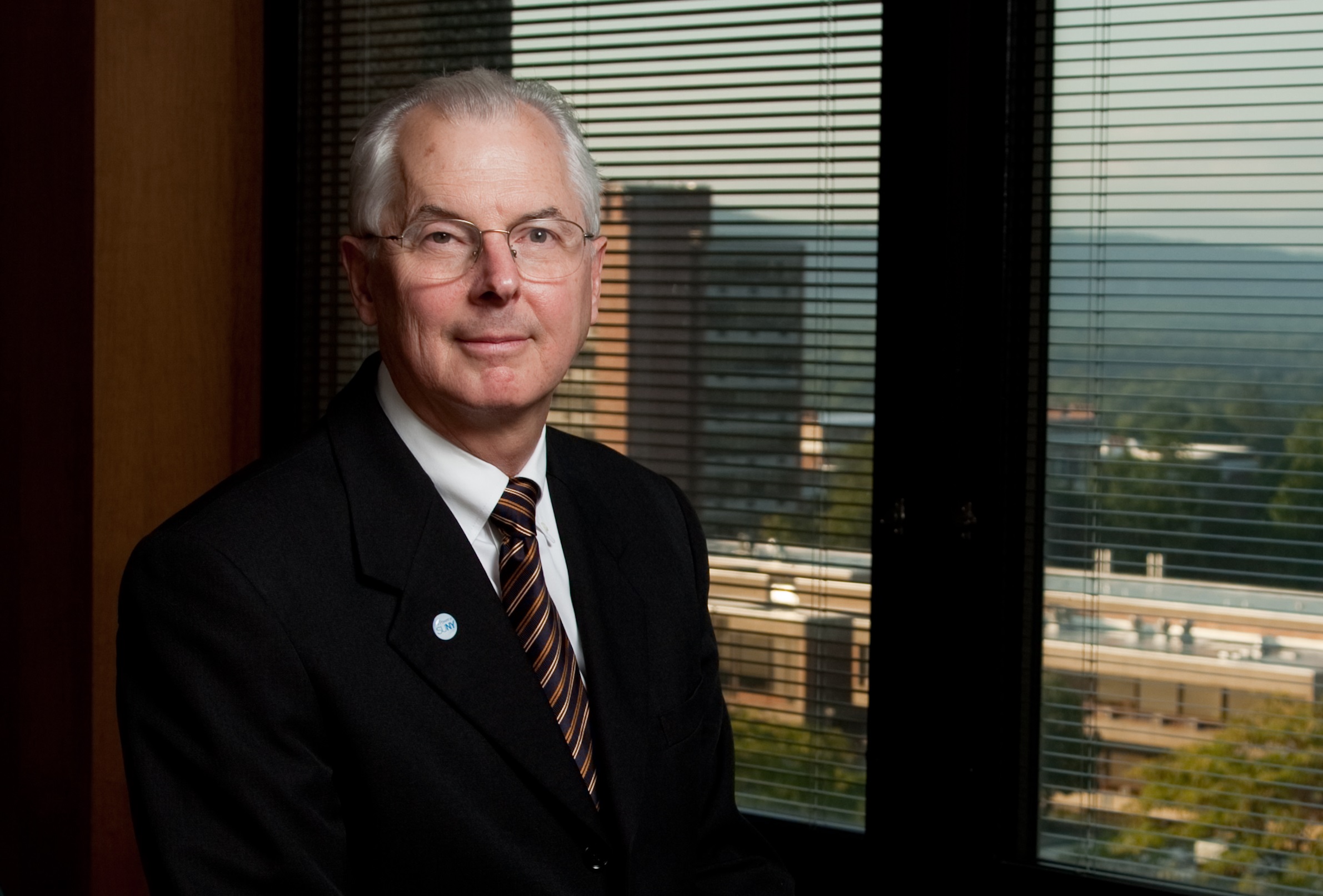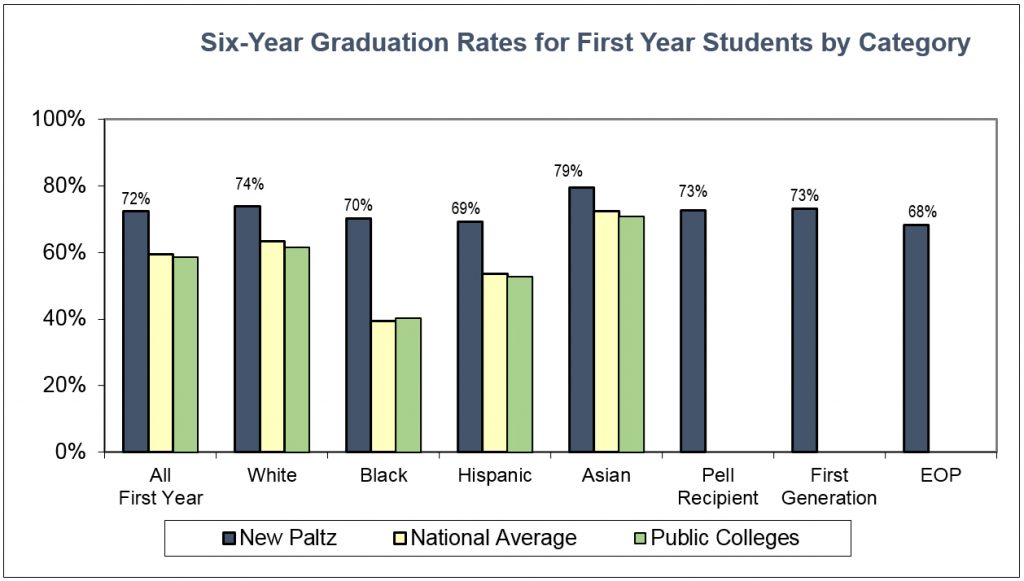President’s Report to the Academic and Professional Faculty
As we enter the final days of a busy and eventful fall 2017 semester, I write to update you on recent news and developments.
Table of Contents:
Graduation Rates – Our latest six-year rates are well above national averages, with notably small “achievement gap” by race/ethnicity and economic status.
Enrollment Update – Winter session enrollments are well above last year; spring semester enrollments on par with last year; and fall semester undergraduate applications and acceptances very strong.
Sexual Misconduct – Restating our values, policy barring sexual/romantic relationships between students and faculty/staff where a power differential exists, and overview of process for investigating accusations and complaints.
Federal Actions – SUNY and higher education organizations are advocating to reverse or reduce impacts of proposed tax bills on colleges and universities and our students.
Future Summit – This event deepened connections between the College and regional arts, business, technology, and entrepreneurial communities.
Holiday Wishes – Best wishes for a safe, happy, and rejuvenating holiday season.
Graduation Rates. Our latest six-year graduation statistics (graph below) continue to demonstrate our consistently high graduation rates, both overall and for students of different racial background and economic status. The narrow “achievement gap” for diverse student groups, compared with national patterns, is quite remarkable and should be a further source of pride for us. In every comparison, our graduation rates are well above the overall national average, and that for public colleges. Here’s what that difference means: with an incoming first-year class of about 1125 students, 130-140 more students graduate from New Paltz in six years than if we performed as an “average” institution. Such successes reflect the dedication of faculty and staff, the opportunities and support we provide for our students, and, of course, our students’ hard work and achievement.
Enrollment Update. As Vice President Michele Halstead outlined in her recent report, our spring semester enrollment numbers (reflecting registration by current students) are strong and on par with last year, and winter session 2018 enrollment has grown substantially – for matriculated and non-matriculated undergraduate enrollments and for matriculated graduate enrollments. We are offering the largest number of seats, with the lowest percentage of unfilled seats, since we began winter session courses in 2012-13. This reflects the growing popularity of this session and careful planning by departments. Some of the uptick in winter session enrollment may be spurred by students taking one or more courses to graduate this year, as encouraged by the Early Graduation Review Process. Every indication is that we will meet or exceed our target number of 350 new transfer students for spring semester, further indication that we likely will surpass our enrollment and tuition revenue goals.
Applications and acceptances for fall semester 2018 first-year admission are currently 20% and 27%, respectively, ahead of last year; applications for transfer admission are also ahead of last year. These trends bode well for next year’s enrollment and tuition income. Of course, “yield” – having our accepted students choose New Paltz over other colleges – will be key in meeting our enrollment targets. Application numbers are high across SUNY, perhaps reflecting the impacts of the Excelsior Scholarship Program. It is possible that this program has increased understanding of the value proposition of public (as opposed to private) higher education in New York, beyond the financial benefits of covering tuition costs for recipients.
Sexual Misconduct. The Diversity and Inclusion Council wrote last week about the flood of recent reports of sexual misconduct and sexual harassment in the entertainment, media, political, and business worlds. As a College President, I am painfully aware that higher education is not isolated from these occurrences, even as our goal would be that none of our employees and students ever confront such acts, nor experience the resulting impacts on their education and professional growth.
The College takes action on every report of sexual misconduct or harassment. Two years ago, we determined that existing policies were not as strong and explicit as they could be. Accordingly, I set a goal for 2016-17 that we develop a clearer, more forceful policy that explicitly prohibits faculty and staff from initiating or engaging in a romantic or sexual relationship with a student where a power differential exists. That new policy, developed in consultation with the Academic Affairs Committee and approved in spring 2017 with full faculty support, provides the College a much stronger foundation to pursue disciplinary action.
As an employer, we must balance support for the reporting individual with the due process rights of the accused afforded under state employment laws. Each case is unique and complex, and outcomes vary depending on the application of law and the facts and circumstances of each case. Human Resources works closely with SUNY System Administration, which provides guidance in the investigation of these cases and in determining course of action and possible disciplinary action. Any discipline imposed on an employee is done in compliance with collective bargaining agreements, which includes union representation.
I take this opportunity to affirm to our employees that any act of sexual misconduct or harassment is contrary to our values and will be addressed. I also want to recognize the courage it takes for any survivor to come forward with their experience. I remind all members of our community to do their part to create (and model for our students and each other) a welcoming, equitable, and safe environment for teaching and learning. As explicitly stated in our policy, faculty and staff who are aware of a romantic or sexual relationship between a faculty or staff member and a student should report their concerns to their supervisors.
Federal Actions. Just as individual citizens are closely watching the House and Senate tax bills, so too are higher education leaders and advocacy organizations. Two organizations of which we are members, ACE (American Council on Education) and AASCU (American Association of State Colleges and Universities), have lobbied hard on issues related to the tax bill proposals, and we are kept apprised regularly of the status of those proposals. ACE president Ted Mitchell has described the bills as “simply wrongheaded.” The House and Senate tax bills differ, with most in higher education viewing the House version as more harmful to students and colleges. It is now clear that a conference committee will be formed to harmonize the two bills; President Trump is expected to sign the bill, likely before the end of the year. The advocacy of ACE, AASCU, and other organizations along with SUNY government relations personnel will continue through this process. Last week, I joined other SUNY presidents in signing onto a letter from Board of Trustees Chair H. Carl McCall and Chancellor Kristina Johnson to the New York federal legislative delegation about the grave impacts these proposed changes will have on our students and employees, and the contributions that SUNY makes to the State of New York.
Impacts on higher education fall into several broad categories:
- The addition of a trillion dollars or more to the federal deficit over the next decade is likely to create further pressure to reduce expenses, perhaps threatening federal funding for higher education;
- Limits on deductions for state and local property taxes are projected to place strains on state budgets, with implications for public higher education funding;
- Doubling the standard deduction for tax filers, which is very likely to hurt incentives for donating to tax-exempt entities like colleges and their foundations;
- The House bill includes provisions to strip tax benefits for students pursuing a degree or paying off loans; that bill would tax graduate student tuition waivers as income;
- The Senate bill imposes an excise tax on the largest endowments held by private colleges. That would not affect our endowments or funding, but higher education leaders worry about precedent.
We will continue to track these developments in the coming weeks, and support advocacy by SUNY and higher education organizations.
Future Summit. We held the second Hudson Valley Future Summit on November 20, organized by Development and Alumni Relations and sponsored by the SUNY New Paltz Foundation and external sponsors. The purpose of this event was to continue connecting the College to the region, and to host inclusive dialogues promoting sustainable growth and prosperity for the region and its residents. The summit attracted a large and diverse group from regional arts, technology, business, and entrepreneurial communities as well as campus participants. The day was organized around six conversations at the intersection of business, culture, technology, and society: the Arts; Economic Development through Technology; Entrepreneurship; Farms and Food; Our Natural Environs; and Preparing the Workforce of Tomorrow, along with keynote addresses by regional business and civic leader Rob Dyson, kt Tobin (Associate Director of the Benjamin Center), and artist, creativity expert, and tech entrepreneur Raghava KK, who recently moved to the Hudson Valley.
Vice President Erica Marks and I are grateful to the faculty, staff, administrators, and students who contributed to the success of the day. We especially want to thank those who joined community members to co-lead the six conversations, and the rich input to those discussions from members of the campus community. This event, like last year’s, helps cement the College’s position as a central regional contributor, and promises new connections and collaborations for our campus. We have received exceptionally positive feedback about this event and about the College and our contributions as an outgrowth of the Summit.
Holiday Wishes. It was great to see so many faculty and staff, including emeriti, at the holiday reception at the President’s residence on December 2. Sandy and I both enjoyed the opportunity to meet and talk with so many people. I heard from several how much they enjoyed getting to meet others who they previously knew only from an email address, and to meet and spend time with faculty and staff from other departments and units. Such interactions certainly support the spirit of community that is central to our mission and vision. Thanks for being there.
I wish everyone a safe, happy, and rejuvenating holiday season. I hope that we all take time to celebrate the blessings of the season and the accomplishments of the year despite its many challenges and difficulties, and to enjoy the company of friends, family, and colleagues. I will look forward to seeing you at the start of spring semester.
Until then, I anticipate I will see many of you at Wednesday’s faculty meeting, where I will be available to respond briefly to your questions.
Sincerely,
Donald P. Christian
President


